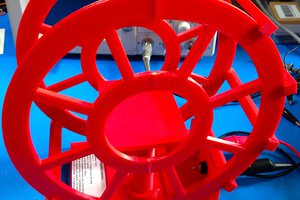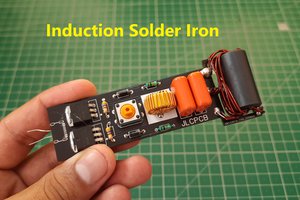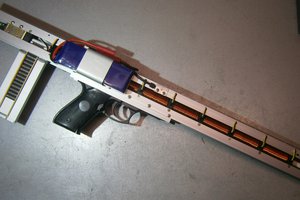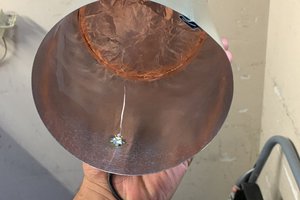Mini Tabletop Tesla Coil Powered by an Arc Lighter
Rechargeable Portable Spark Gap Tesla Coil for Science Demonstrations
Rechargeable Portable Spark Gap Tesla Coil for Science Demonstrations
To make the experience fit your profile, pick a username and tell us what interests you.
We found and based on your interests.
This is a copy of my inputs to JAVATC and the values it returned: Mini Tabletop SGTC (inspired by Plasma Channel)
Calculations made using: J A V A T C version 13.1 - CONSOLIDATED OUTPUT
Units = Inches
Ambient Temp = 68°F
Surrounding Inputs:
----------------------------------------------------
Secondary Coil Inputs:
----------------------------------------------------
----------------------------------------------------
Primary Coil Inputs:
----------------------------------------------------
Helical primary coil form (not a pancake coil)
----------------------------------------------------
Top Load Inputs:
Toroid :
----------------------------------------------------
Secondary Outputs:
----------------------------------------------------
----------------------------------------------------
Primary Outputs:
----------------------------------------------------
----------------------------------------------------
I'm putting together a few diagrams to make values like major and minor diameter of toroid, as well as the various heights mentioned. There may be some missing dimensions (like insulation on wire in primary coil) but I will add these.
My parts and design for Arc Lighter Powered Tabletop Tesla Coil:
Plasma Channel’s parts and design for Arc Lighter Powered Tabletop Tesla Coil:
What I used from Plasma Channel’s design in my Final design
For a more classic Tesla Coil look I redesigned the coil with a toroid for the top-load.
Details, build instructions and links to 3D Printed parts, etc. coming very soon!
I really love the high voltage projects Jay shows on Plasma Channel (https://www.youtube.com/c/PlasmaChannel ). While it is sometimes difficult to replicate some of his designs they still provide excellent ideas and inspiration.
Since I am
frequently inspired by the content he produces I always keep my eye
out for new projects he posts and that is how I came across his build of an arc lighter powered spark gap Tesla Coil.
In attempting to replicate his build of an arc lighter powered spark gap Tesla Coil I ended up encountering a few Issues – the main one being that calculations based on his design didn’t seem to work out right. In addition, missing information made it even more difficult to replicate:
I did attempt to work around these issues since he did provide the capacitance of the primary tank circuit (capacitor bank) and the inductance of the secondary circuit (coil form dimensions including height of windings and wire gauge).
In the end I designed a new coil based on the secondary coil geometry and the primary capacitance from Plasma Channels design since I had already made these 2 elements. I also used the same High Voltage diodes that he listed except that I changed that portion of his power supply from a single diode rectifier to a full bridge rectifier (in the hopes of increasing power to the primary coil).
To check all calculation's and optimize the design I used JavaTC.
Create an account to leave a comment. Already have an account? Log In.
Become a member to follow this project and never miss any updates


 ElectroBoy
ElectroBoy
 Pinomelean
Pinomelean
 ammarbhayat28
ammarbhayat28